Skanderbeg Square is the epicenter of the capital, surrounded by some of the most important buildings of the country. The space was initially designed in a circular shape by three architects of Mussolini’s Italy: Florentano de Fausto, Gherardo Bosio and Armando Brasini. It was in 1937 that the square was given the name of the Albanian national hero. Only two years ago, it was reconstructed to become a pedestrian space. The large square has the interesting shape of a slight pyramid that culminates in its very center. During the summers, water rushes down its sides to refresh the passers-by!
The Clock Tower
This landmark and symbol of the capital was finally opened for tourists in 1996. Built in 1822, the monument initially housed a bell brought from Venice which chimed every hour! Another Venetian detail is its dome, which highly resembles that of St. Mark’s Bell Tower in Venice. Inside the tower, the 90 steps on a long spiraling staircase take you to its very top, at 35 meters.
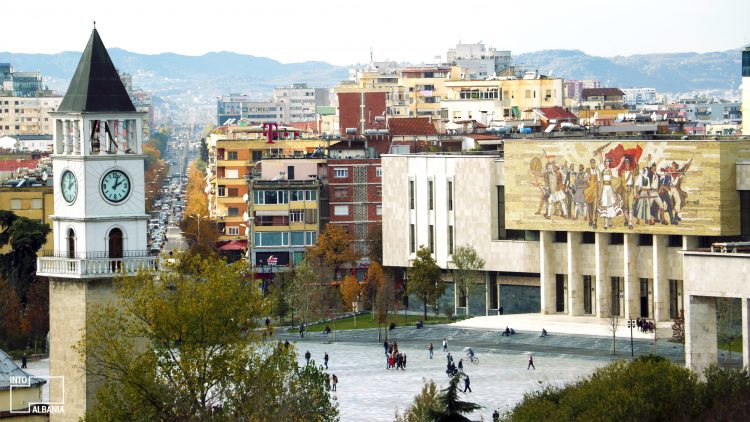
The Clock Tower, Tirana, photo by Intoalbania
Et’hem Bey Mosque
Right next to the Clock Tower, stands Et’hem Bey Mosque, another iconic monument of the city. It is the only surviving mosque from the eight built-in Tiranë during the 18th-19th centuries. Its foundations were constructed by Mulla Bey in the 18th century while the shrine was completed by his son, Haxhi Et’hem Bey, in the first quarter of the 19th century. It represents a typical object of oriental architecture, exhibiting very beautiful intricate murals.
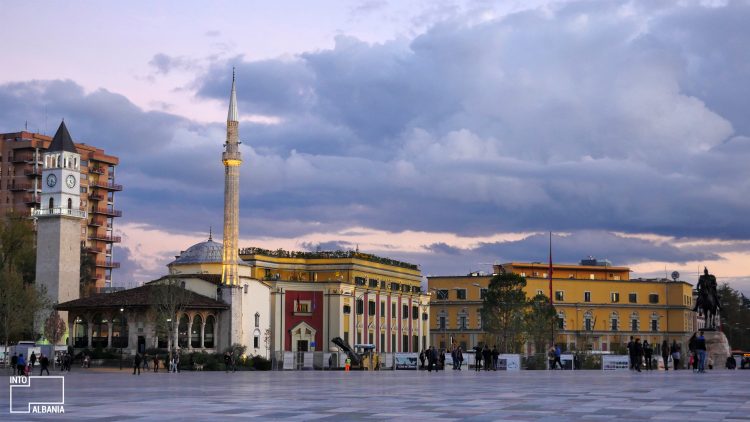
Et’hem Bey Mosque, Tirana, photo by Intoalbania
Skanderbeg Statue
The square’s namesake, the Skanderbeg Statue is the most dominant object of the square. Though perhaps the shortest, at a height of 11 meters, it remains the most powerful! This masterwork of famous Albanian sculptors, Odhise Paskali, Andrea Mano and Janaq Paço was placed in the city center in 1968, to commemorate the national hero’s on the 500th anniversary of his death.
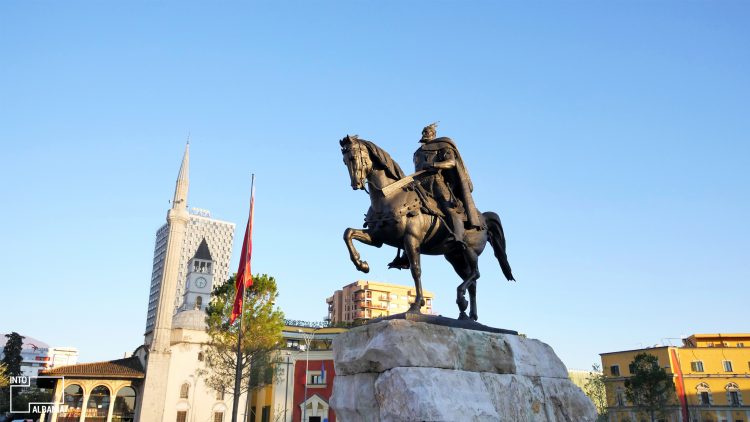
Skanderbeg Statue, Tirana, photo by Intoalbania
Bank of Albania
The semi-circular building was designed by the famous Italian architect Vittorio Ballio Morpurgo, in the Rationalist architectural style of the 1920s. Hence, the large volumes and facades characteristic of this style are found in the bank building. The construction work began in February of 1937 and ended on October 30th, 1938. A giant mosaic, created by the Italian artist Giulio Rosso, adorns the bank’s interior hall. The building’s reconstruction in 2015 added some contemporary touches to its western part.
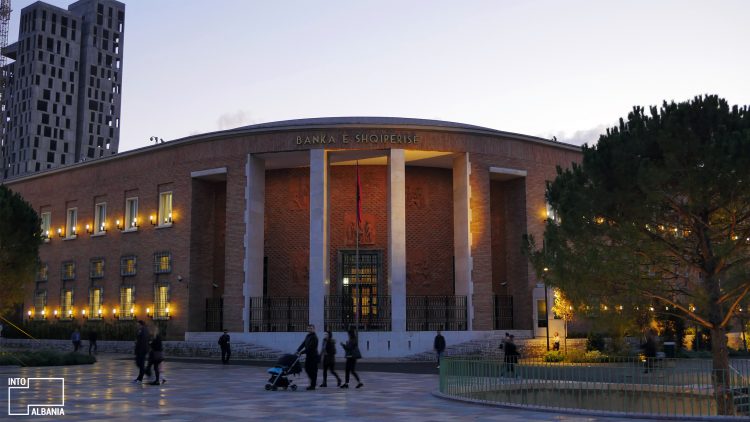
Bank of Albania, Tirana, photo by Intoalbania
Palace of Culture
Across from the bank, stands the Palace of Culture. The very Soviet-style building replaced Tirana’s former Old Bazaar in 1959, at the height of Communism in Albania. Actually, its very first brick was placed by former USSR President Nikita Khrushchev and its last in 1963, when the building was completed. The building houses inside it the National Theater of Opera and Ballet and the National Library.
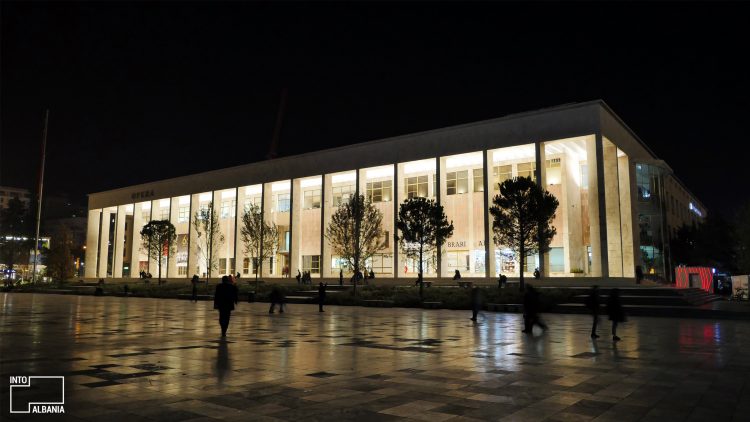
Palace of Culture, Tirana, photo by Intoalbania
National Museum of History
One of Tirana’s most recognizable landmarks, this structure is one of Albania’s most treasured historical and architectural objects. Inaugurated on October 28, 1981, this museum is the largest in Albania! Its front façade is marked by a giant mosaic designed to show the developmental stages of Albanian people throughout the centuries. Its creation gathered the top experts of history, linguists, archaeology, ethnography, cartography, architecture and art in Albania. For our extended article click here.
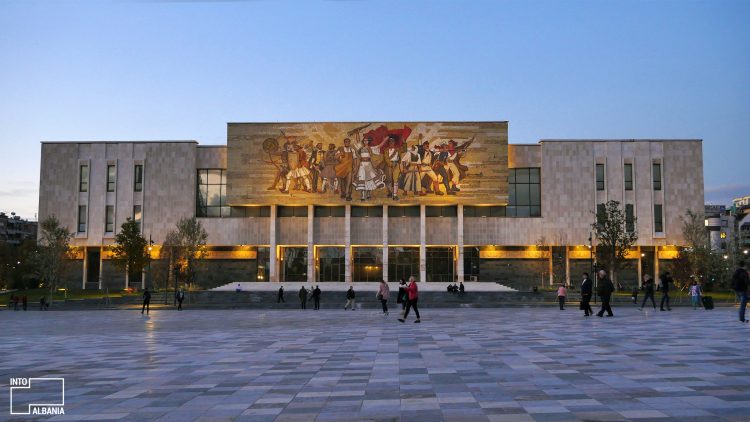
National Museum of History, Tirana, photo by Intoalbania






